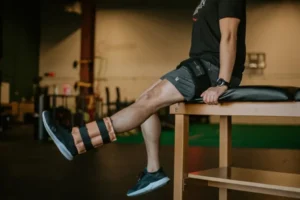
Call (239) 919-3510
Call (239) 919-3510

October is breast cancer awareness month. Breast cancer is one of the most common forms of cancer in America. In fact, most people have a friend or family member who has dealt with a form of breast cancer. While the medical management of breast cancer can be lengthy and extensive, the rehabilitation process following is also vital to ensure patients can return to their desired activities.
Because the management of breast cancer usually involves some form of surgery, including but not limited to a lumpectomy or mastectomy, therapy following the procedure is a must. Physical therapy is primarily used to reduce pain, improve range of motion, limit lymphedema, and improve strength. Some or all of these factors can affect the patient physically, mentally, emotionally, spiritually, and habitually. It is the role of the physical therapist to help the patient move past these limitations and towards a happy, healthy future.
In order to demonstrate what the therapeutic process looks like for this type of patient, we will look at each part of the rehab process individually. When a surgical procedure is performed, regardless of the location or extent of the surgery, pain is present due to the healing that must occur to our tissues. Following surgery for breast cancer, many patients complain of pain and tightness into the chest and under arm due to scaring. Hands-on, manual therapies can be applied to the area by the therapist to reduce these adhesions/restrictions. In doing so, the patient tends to experience relief in the surrounding soft tissue. Pain is a very complicated and individualistic characteristic that is impacted by a multitude of factors. While pain tends to be the most obvious complaint from patients, other parts of therapy will help to reduce pain as well.
Range of motion (ROM) is defined as the total amount of movement a specific joint can perform. As mentioned above, scaring can also impact the ability for an area to move through the full ROM. Pain, weakness, and fear are just some other factors that may limit range of motion as well. ROM occurs in 3 ways based on how voluntary the movement is performed by the patient. These types include passive, active assistive, and active ROMs. All of these measures will be applied to a patient following a breast cancer surgery to ensure that the patient regains full mobility with limited discomfort in order to perform daily activities successfully.
Lymphedema occurs when lymph, a clear fluid that helps filter waste, is collected due to damage to the lymph node. For a patient following breast cancer, lymph nodes may be removed during the surgical procedure or damaged through chemotherapy and/or radiation. Therapeutic techniques can be applied to these swollen areas to help move the fluid away from these locations and back into the normal lymph system. By allowing this to happen, therapy can reduce swelling and pain and reduce the chances of infection occurring.
Strengthening is a vital component of the rehabilitation process for any patient. This is especially true for a patient following breast cancer. Strengthening the weak areas not only builds muscle strength and promotes positive physiological changes, but also improves functional independence for activities and improves quality of life. We also tend to see improved mood and outlook with strength training as well as a reduction in fatigue with daily living skills.
Breast cancer awareness month is an incredible opportunity to teach the public about this horrible disease. Being diagnosed with breast cancer is not an easy road for any patient to navigate. A long and challenging journey awaits most of these patients. We, as physical therapists, are honored to play a small role in the recovery process for these individuals.
Email: Info@naplespremierpt.com
Phone: (239) 919-3510
Website: www.Naplespremierpt.com